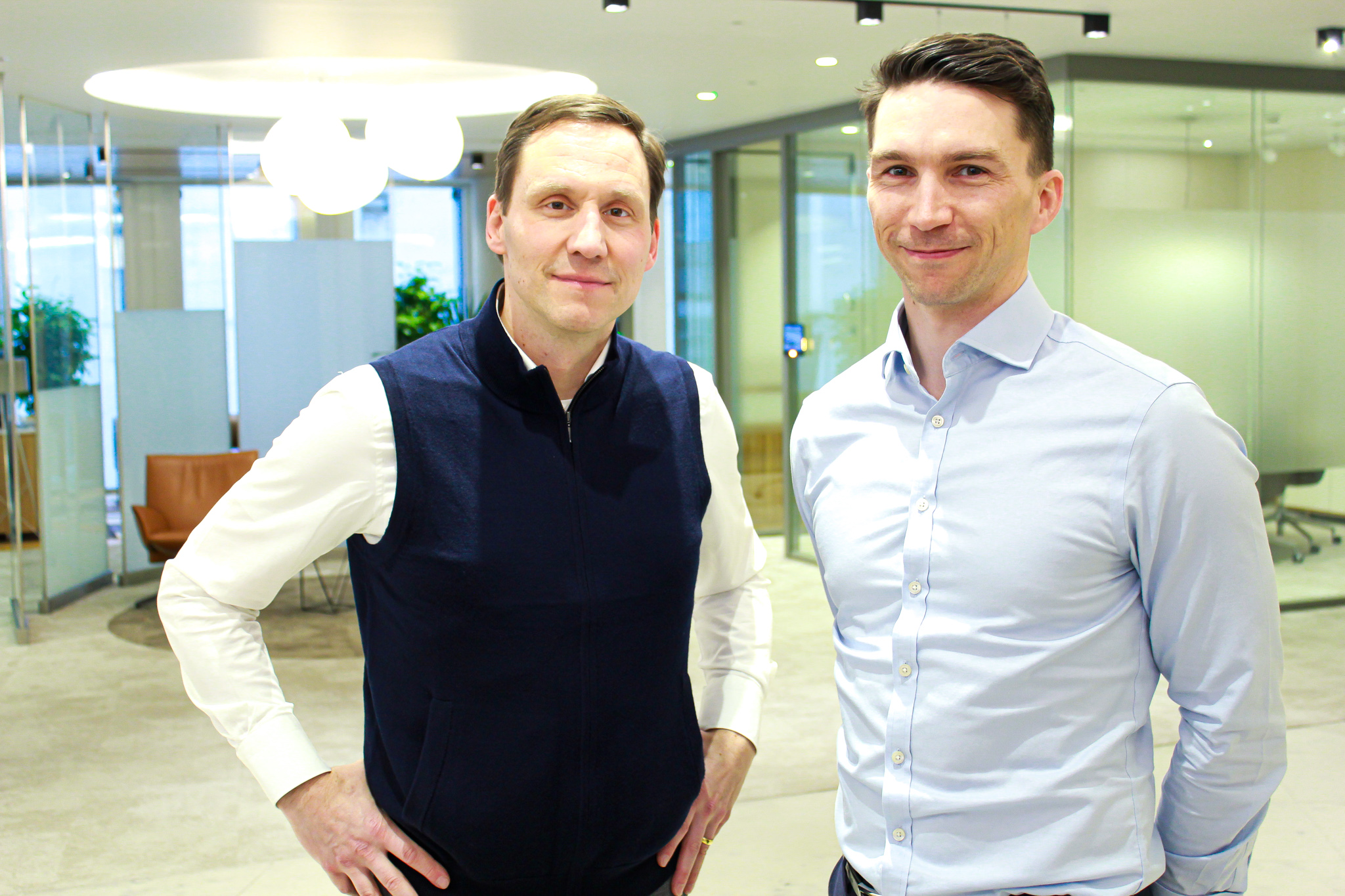The unprecedented gas and power price volatility in Europe as a result of the Energy Crisis caused a ‘dash for cash’. Not only did utilities and traders have to pay materially higher prices in the spot market, but they also had to cover massive increases in initial and variation margins for their significant futures positions.
As a leading bank in the energy and commodities markets, Mizuho have been at the forefront of finding solutions for corporates, from the beginning of energy market turbulence in the summer of 2021, through to today. The solutions have ranged from various forms of liquidity support, to highly structured transactions to monetise existing assets. We have also underwritten and worked alongside other banking partners for the large liquidity support facilities that have required syndicated or club solutions.
The re-wiring of the energy flows will take time. We expect to see continued volatility in the markets for the foreseeable future – at the very least until sufficient US Liquefied Natural gas (LNG) supply enters the market in the next 2-3 years and EU import bottlenecks are resolved.

McAspurn-Lohmann believes angst and volatility in the European gas and power markets remains for the next years
Given the tightness in the market there are likely further challenges ahead, the energy markets have lost the capacity to cope with further supply and demand shocks. Availability of gas supply, competition for LNG cargos between Europe and Asia, alternative power generation, gas storage, weather, uptime of the EU’s aging nuclear fleet and power demand destruction, are just some of the factors that will affect the volatility in the European gas and power markets for a long time to come. Whilst gas prices have calmed down significantly in recent months, balance sheets and trading books have been prepared and stress tested for the anticipated new reality of continued heightened volatility.
Demand destruction is key to balance the European market
Despite the high gas prices and unfavourable economics, the gas demand from the European power sector actually increased by 2% last year. The reasons for this were issues in other parts of the generation mix, most notably French nuclear disruptions and reduced hydro power production due to drought weather conditions. This also highlights the short term difficulties in reducing gas demand in the power sector.
The high and volatile gas price (compared to pre 2021) will drive persistent, large demand destruction in Europe, adding another layer of complexity. Germany’s industry is particularly challenged. However, the country's manufacturing sector has demonstrated remarkable resilience, with gas consumption significantly lower than expected while maintaining constant output levels. This adaptability can be attributed to a combination of factors, including reduced production in energy-intensive sectors, increased imports of energy-intensive inputs, and improvements in energy efficiency and fuel switching. While this bodes well for the future, there are ongoing concerns regarding the sustainability of energy savings and the long-term impact of high gas prices, particularly for the chemical industry which has limited options. Addressing these challenges will be critical for ensuring the continued success of the German industry in the face of the energy crisis, or this will further challenge the foothold of energy intensive industries in Europe. Partially aided by the warm winter, EU gas demand in 4Q 2022 is down 20% year-on-year.

O'Connor says that plenty of liquidity is chasing comparably few renewable energy projects
REPowerEU and the EU’s Green Deal Industrial Plan are the key government incentives for increased renewables development, energy efficiency improvements and a move away from dependency on fossil fuels. It is forecasted by the European commission that an additional investment of c.EUR65bn per annum in renewables is required to reduce natural gas demand by 40% by 2030 (equal to the previous Russian imports). As long as the EU avoids a recession we believe these investments will be made, especially considering that at an average EUR100/MWh average gas price for a year, the EU would spend approximatelyEUR420bn per annum on gas. Banks also have a material appetite to support renewables projects and there is strong competition to participate in these transactions, there is no shortage of liquidity at this time for the right projects.
Volatile times ahead – quick fixes necessary to ensure supply in Europe
US LNG deliveries to Europe reached a record high and accounted for 43% of LNG imports. In the absence of a large portfolio of long term LNG supply contracts, Europe has had to buy in the volatile spot market. There is little evidence that this spot market dependency is going to change. Whilst the energy mix is shifting under REPowerEU, European countries are carefully considering whether to enter into long term gas supply arrangements. European cross-border cooperation in the energy sector is picking up and may open up the possibility for joint supply arrangements, but portfolio players and traders will be unlikely to give up their highly valuable contracted flows at a discount. Those suppliers are seeking to capture arbitrage opportunities between Asia and Europe for the coming years. Europe has recently agreed some strategic, long term tie ups with LNG producers in the Middle East to cover part of its long term requirements, whilst retaining exposure to the spot market for a large portion of requirements. Whilst this will expose the EU to more price volatility it will allow reductions in gas imports as part of decarbonisation targets, flexibility for the European pathway is key.

The pair view the recovery in China's gas demand as the global gas market narrative
Looking ahead to the rest of 2023, in my view, a recovery in China's gas demand will shape the global gas market narrative. European demand throughout the summer to refill storage is all but assured, whereas China's natural gas consumption, predicted to be 6% higher than last year, is open to higher uncertainty and will be more price sensitive. The full lifting of pandemic restrictions and an anticipated economic recovery in the second half of the year, as well as the coal-to-gas switching initiatives, are expected to boost gas demand. However, uncertainty remains as the risk of a global recession has not vanished. Chinese state energy companies have been clear that high LNG prices will limit a rebound in gas demand. Other emerging Asian countries, which were previously seen as key drivers of LNG trade growth will also remain price sensitive, Pakistan recently announced it will shun LNG in favour of coal for future energy investments to meet its growing energy demand, other emerging economies are likely to follow. Markets that continue to rely on LNG will have to sign offtake contracts to insulate themselves from spot price volatility that Europe’s high exposure to the spot market will only exacerbate. Overall we expect to see strong competition for flexible LNG volumes – this is a supplier market.
So what is the medium term view?
The global LNG market is expected to be tight until 2026. Despite new liquefaction projects being commissioned over the next five years, supply is unlikely to catch up with the step change in LNG demand and predicted growth. We believe that the global gas and LNG spot price dynamics will shift structurally over the next five years, with US LNG netbacks for Europe’s benchmark TTF likely holding a premium over Asia’s JKM spot price to attract more LNG to Europe. The US is expected to become the largest LNG supplier by 2026, outpacing Qatar, with output rising over 50%.
Europe is expected to drive most of the growth in global LNG demand, adding 44 million tons in the coming five years out of a total of 69 million tons (+19%) globally. However, in North Asia, LNG demand is projected to decline, with Japan's demand expected to decrease by 30% from 2021 to 2026 due to bringing nuclear plants back online, renewables, and coal generation. Meanwhile, emerging Asian markets are set to see slower LNG demand growth, as price-sensitive buyers reduce expensive LNG imports.

For now gas remains at the core of the EU energy mix and will drive power prices and ultimately the regions competitiveness.
The development of new import terminals with over 60 million tons of aggregated capacity will be key to increasing LNG deliveries to Northwest Europe and averting potential supply bottlenecks. Governments have mandated utilities to procure and deploy floating storage regasification units (FSRU) and expand existing re-gasification terminals. We have counted over 30 possible projects, with half of them having reached FID at the time of this article and three already operational. However, not all of these new infrastructure projects are expected to run at full capacity, as pipeline bottlenecks will also prevent send-outs. Europe’s gas demand for power will be capped by the growth of renewables.
The compromise: more focus on security now, but ultimately a quicker decarbonisation in the EU
The turbulence in the global energy markets not only came at a large cost for consumers but also reduced the immediate focus on sustainability. Global carbon emissions from fossil fuels for 2022 were at an all-time high of 38 gigatonnes, linked to higher coal use. The focus on LNG decarbonisation also took a backseat. For example, reports of carbon-neutral cargo deliveries dipped to just two in 2022, as opposed to 23 the previous year. The transparency on carbon emissions remained low as the industry faced pushback on definitions of ‘carbon neutrality’ of cargoes and questions over who should pay for the premium.
Natural gas companies are now making renewed efforts to sell "carbon neutral" fossil fuels, following the release of new industry guidelines. Certification can now be made under a new standard developed by the International Group of Liquefied Natural Gas Importers (GIIGNL), which includes standards for documentation and transparency. However, there is still some scepticism surrounding the "carbon neutral" label on fossil fuels. The industry faced criticism for using low-quality carbon credits, which provide little if any environmental benefit, and a lack of transparency in measuring emissions and purchasing credits.
Timing of peak gas demand is uncertain, but gas will be structurally more expensive in the EU going forward
LNG has allowed Europe to keep the lights on, this despite losing its main gas supplier and being simultaneously impacted by large outages in its aging nuclear fleet and drought impacting hydroelectricity production. Gas will remain a key fuel for the remainder of the decade, but forecast demand post 2030 will be heavily influenced by the transition to sustainable energy. I believe we’ve seen the end of cheap, unabated gas in Europe. LNG’s cost to destination is higher than piped gas, the forecast volatility means hedging will likely remain expensive, higher levels of storage will be required given infrastructure bottlenecks and this is before we look at carbon abatement, the EU’s carbon prices look unlikely to decline
Energy crises have historically been inflection points in markets. With the US Inflation Reduction Act, China’s multi-billion dollar decarbonisation support program and the EU’s Green Deal Industrial Plan, it is clear policy makers want to reduce their dependency on gas and LNG. For the large energy importing regions, renewables offer the promise of more sustainable, affordable and reliable energy compared to gas.
Even with the strong support of policy makers, the ambitions of energy companies, plus ready availability of financing, the deployment of renewables at utility scale takes time. There is optimism that the EU will experience peak gas demand by 2030 and post that point demand will be consistently eroded by each gigawatt of renewables deployed. But for now gas remains at the core of the EU energy mix and will drive power prices and ultimately the regions competitiveness.




